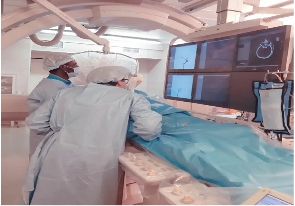The way we handle complex surgical operations is always changing in the dynamic world of medicine due to technological breakthroughs. Neurosurgery is one field in which these innovations have had a significant influence. For patients with a variety of neurological problems, minimally invasive neurosurgery in particular has become a source of hope.
By lowering risks, speeding up recovery times, and enhancing patient outcomes overall, this innovative technique is changing the game. Traditional neurosurgery frequently entails significant tissue damage, wide incisions, and lengthy hospital stays. These elements may cause more discomfort, a greater risk of infection, and longer recovery times.
A less intrusive alternative, however, is provided by minimally invasive neurosurgery, which enables surgeons to access and treat brain and spine problems with higher accuracy and with less harm to the tissues around the affected areas.
The application of cutting-edge imaging techniques is one of the major advancements in minimally invasive neurosurgery. 3D modeling, high-resolution MRI, and CT images have transformed preoperative planning. Now that detailed maps of the brain or spine can be made, surgery may be navigated more precisely. When working with sensitive tissues like the brain, where even small mistakes can have serious repercussions, accuracy is essential.
Neuro-navigation systems have also developed into a crucial component of less invasive surgeries. While doing surgery, these systems use real-time imaging to provide constant updates on the precise location of surgical tools and any anomalies in the patient's anatomy.
The surgeon's capacity to perform precise, targeted procedures while limiting harm to healthy tissue is improved by this technique. The capabilities of minimally invasive neurosurgery have recently increased due to the
introduction of robotic-assisted surgery. Robots can help surgeons carry out complex procedures with unparalleled stability and precision.
These robotic systems are operated by surgeons using high-definition cameras and specialized tools, enabling them to execute intricate procedures through tiny incisions. In addition to lowering the possibility of problems, this method also
enables shorter hospital stays and quicker recoveries. The use of laser technology for specific neurosurgery operations is another impressive development.
For instance, laser ablation is a minimally invasive method that is used to treat brain tumors and epilepsy. Small skull incisions allow for the exact execution of this technique, protecting healthy tissue and reducing
postoperative problems.
The management of spinal disorders is also changing as a result of minimally invasive neurosurgery. The treatment of conditions like herniated discs, spinal stenosis, and spinal malignancies can be accomplished with minimally invasive procedures, which need fewer tissue disruptions and smaller incisions. Patients experience less discomfort, less scarring, and a quicker return to regular activities.
The enhanced quality of life that minimally invasive neurosurgery provides patients is one of its most important advantages. People can get back to
their everyday routines and loved ones sooner with shorter hospital stays and faster recoveries.
Patients can concentrate on their recovery and rehabilitation rather than dealing with postoperative concerns because of the lower risk of complications and infection.
The development of minimally invasive neurosurgery is, in summary, transforming the practice of neurosurgical medicine. For patients with neurological problems, these cutting-edge methods, powered by better imaging, navigation systems, robotic help, and laser technology, offer new hope.
Numerous people's quality of life is being improved by minimally invasive
neurosurgery since it lowers risks, lessens trauma, and speeds up recovery. We can anticipate even more exciting advancements in this area as technology progresses, which will eventually help patients and improve their outcomes.
Opinions of Wednesday, 18 October 2023
Columnist: Dr. Simon Badu



















